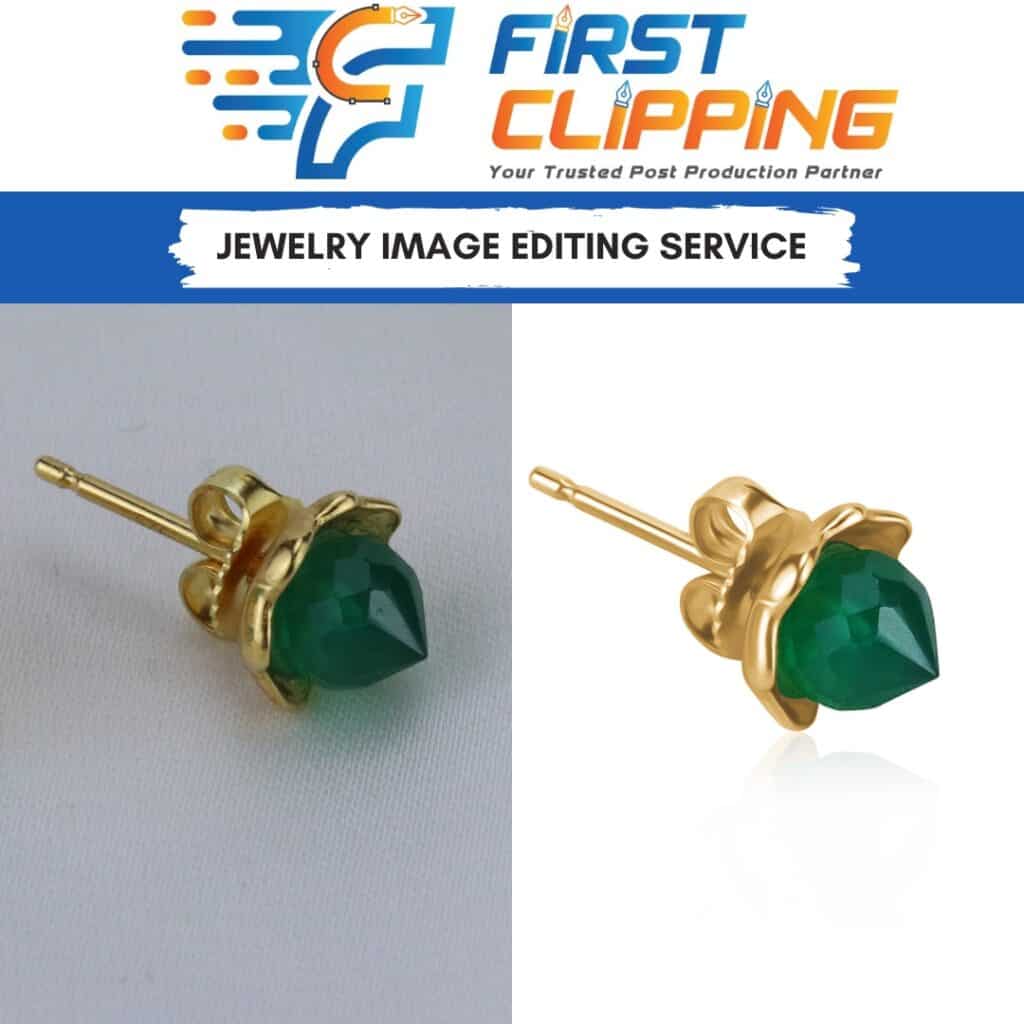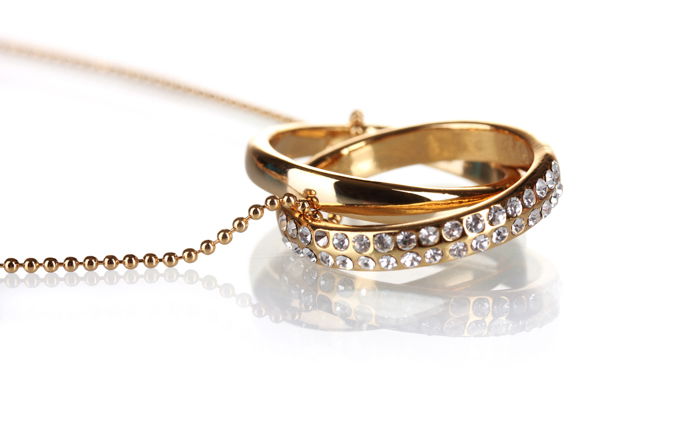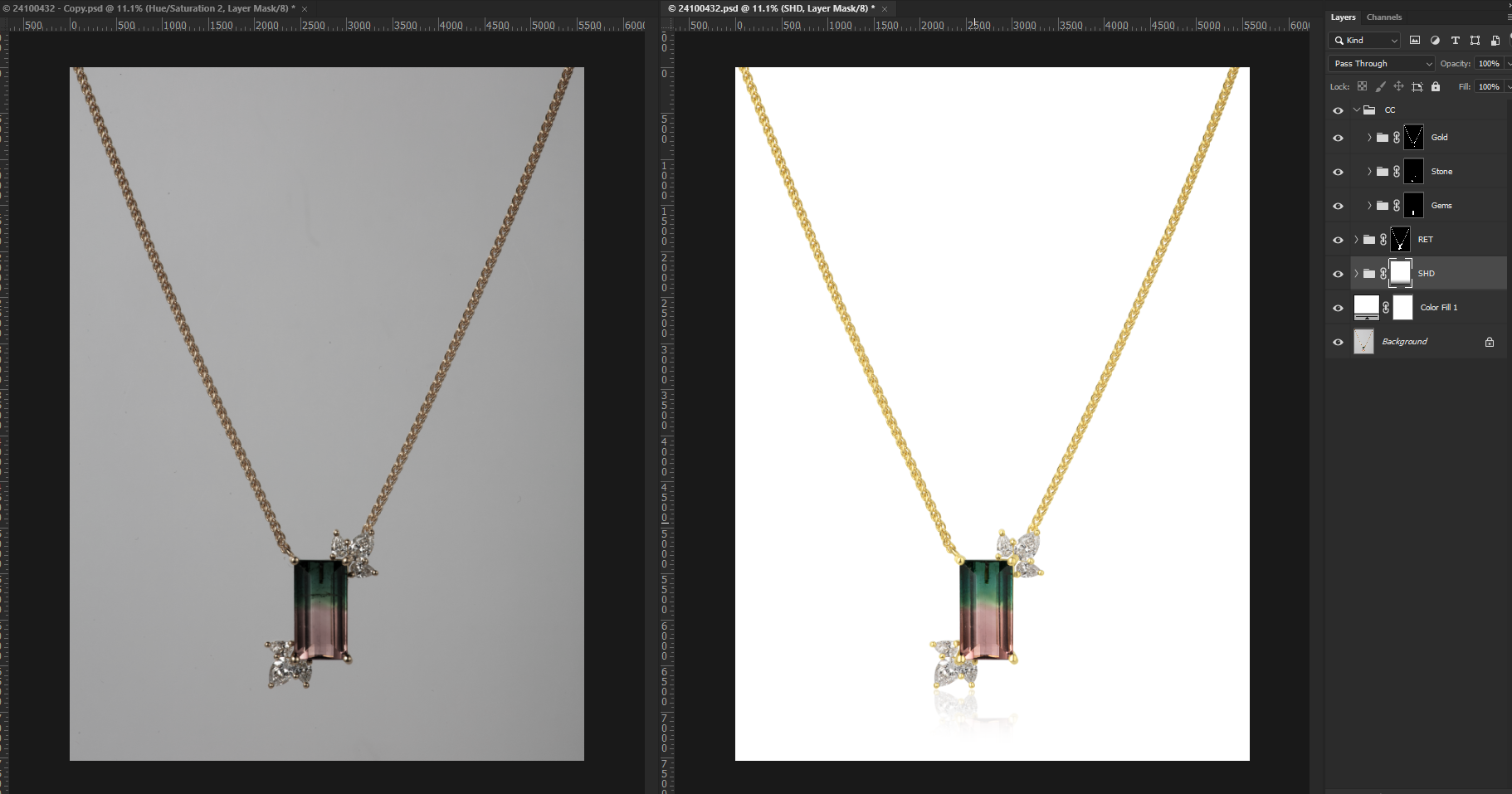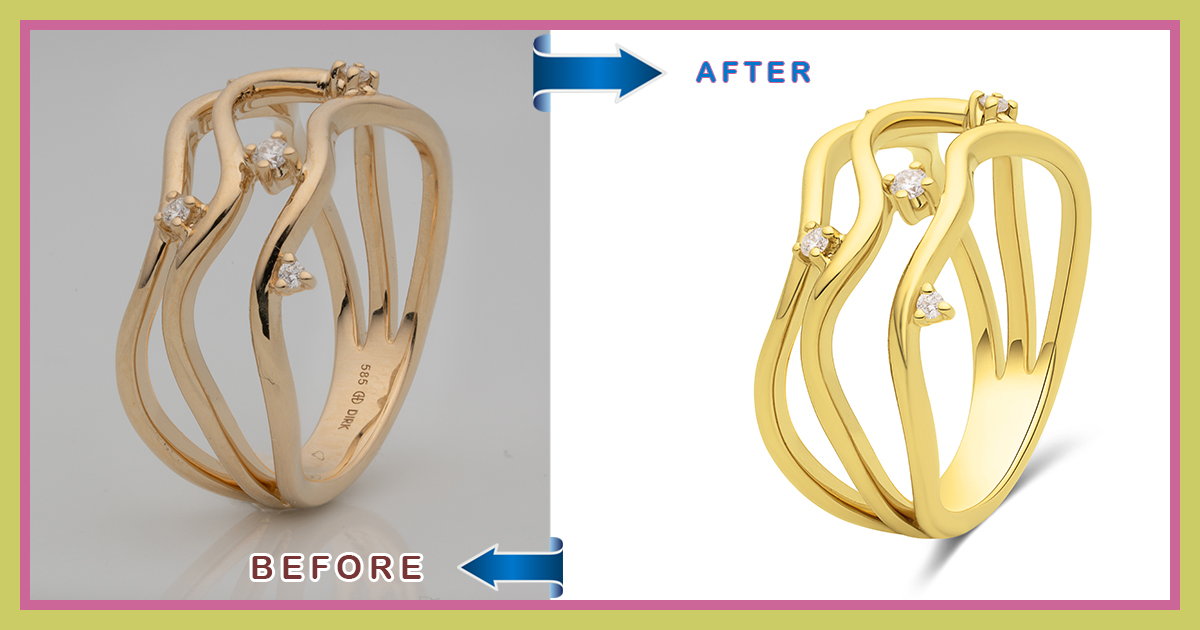The best lens for jewelry photography is a macro lens, which allows for capturing intricate details and achieving sharp, close-up shots. With its ability to focus at a very close distance, a macro lens is ideal for capturing the fine craftsmanship and textures of jewelry pieces.

When combined with a good lighting setup, a macro lens can produce stunning, high-quality images that showcase the brilliance and sparkle of jewelry. Whether you are shooting diamond rings, delicate necklaces, or intricate earrings, a macro lens is essential for bringing out the beauty of each piece in your jewelry photography.

Introduction To Jewelry Photography
Importance Of High-Quality Images For Jewelry Marketing
Jewelry is a visual and luxurious product that requires appealing and captivating images to entice potential customers. When it comes to marketing jewelry, high-quality images play a pivotal role in capturing attention and driving sales. Here are some key points highlighting the importance of high-quality images in jewelry marketing:
- First impressions matter: High-quality images create a positive first impression and help customers visualize the beauty and intricacy of the jewelry. They evoke emotions and establish a sense of trust and credibility.
- Showcasing details: Jewelry photography should highlight the unique details, craftsmanship, and precious materials used in the pieces. High-resolution images allow customers to zoom in and examine these details, enticing them to make a purchase.
- Brand representation: Professional images contribute to a brand’s image and reputation. Well-shot jewelry photos showcase professionalism, quality, and attention to detail, helping to build a strong brand identity that resonates with customers.
- Social media and online platforms: In today’s digital era, social media platforms and online marketplaces are essential for jewelry marketing. Attention-grabbing images drive engagement, clicks, and conversions. High-quality jewelry images are more likely to be shared and attract potential customers.
- Increased sales: Stunning images enhance the perceived value of jewelry, making customers more willing to invest in high-end pieces. Well-presented jewelry photographs can lead to higher conversion rates, increasing sales and revenue for jewelry businesses.
Challenges Photographers Face In Capturing Jewelry
Jewelry photography presents its own unique set of challenges that photographers must overcome to capture the beauty and essence of the pieces. Here are some common challenges faced by photographers in the realm of jewelry photography:
- Reflective surfaces: Jewelry often includes reflective surfaces such as gemstones, metals, or glossy coatings. Photographing these surfaces without unwanted reflections can be tricky and require specialized techniques, lighting setups, or post-processing.
- Depth of field: Jewelry pieces often have intricate details, and capturing these details in sharp focus can be challenging. Achieving the right balance of depth of field ensures that the entire piece is in focus, while still maintaining an aesthetically pleasing background blur.
- Color accuracy: Accurately representing the colors of gemstones, metals, and other materials is crucial in jewelry photography. Ensuring accurate color reproduction can be challenging due to variations in lighting, camera settings, and post-processing techniques.
- Macro photography: Capturing fine details in jewelry often requires the use of macro lenses. Macro photography requires careful focusing, stabilization, and control of depth of field to showcase the minute intricacies of the jewelry pieces.
- Jewelry presentation: Presenting jewelry in an appealing and eye-catching manner can be a challenge. Styling, arranging, and capturing jewelry pieces in a way that highlights their unique features and allure requires creativity and attention to detail.
Role Of Lenses In Jewelry Photography
Lenses play a crucial role in jewelry photography, influencing the overall quality and aesthetics of the captured images. Here’s how lenses contribute to capturing stunning jewelry photographs:
- Macro capabilities: Macro lenses are primarily used in jewelry photography to capture intricate details and textures of the pieces. These lenses offer a close focusing distance and high magnification, enabling photographers to showcase the fine craftsmanship and unique features of the jewelry.
- Depth of field control: Lenses with wide aperture capabilities allow photographers to control the depth of field effectively. By selectively focusing on specific areas of the jewelry, photographers can create a pleasing background blur while maintaining sharpness on the key elements.
- Image stabilization: Image stabilization technology in lenses helps minimize blurriness caused by camera shake. This feature is especially beneficial when capturing close-ups of jewelry, where even the slightest movement can result in loss of sharpness.
- Focal length considerations: Different focal lengths can yield varying perspectives when photographing jewelry. Wide-angle lenses can capture the entire scene, showcasing the jewelry in context, while telephoto lenses can compress the perspective, emphasizing the details and creating a more intimate feel.
- Lens quality: Investing in high-quality lenses with excellent optics and minimal distortion is crucial for capturing sharp, detailed, and distortion-free images of jewelry. The optical quality of the lens directly affects the overall image quality.
High-quality images are essential for successful jewelry marketing. Overcoming challenges like reflective surfaces and depth of field, and utilizing the right lenses, contribute to capturing captivating jewelry photographs that can enhance brand reputation and drive sales.
Factors To Consider When Choosing A Lens
When it comes to jewelry photography, selecting the right lens is crucial. The lens you choose can significantly impact the quality of your images, particularly when it comes to capturing the intricate details of jewelry pieces. Here are some important factors to consider when choosing a lens for your jewelry photography:
Aperture Size And Depth Of Field
- The aperture size plays a critical role in jewelry photography as it determines the amount of light that enters the lens.
- A wider aperture (smaller f-number) allows more light to enter, which is beneficial when shooting in low-light conditions.
- A wider aperture also results in a shallow depth of field, meaning that only a small portion of the image will be in focus while the rest will be blurred.
- Alternatively, a narrower aperture (larger f-number) reduces the amount of light but increases the depth of field.
- To capture the finest details of jewelry, it is generally recommended to use a narrower aperture to achieve a greater depth of field.
Focal Length For Different Types Of Jewelry
- The focal length of a lens determines the field of view and level of magnification.
- For small jewelry pieces like rings or earrings, a lens with a focal length ranging from 50mm to 100mm is ideal.
- A macro lens with a focal length of 100mm or higher allows you to capture close-up shots with exceptional detail.
- When photographing larger jewelry items or multiple pieces at once, a wider focal length such as 35mm or 50mm can help capture the entire subject while maintaining sharpness.
Lens Distortion And Image Quality
- Lens distortion can be a common issue in jewelry photography, as it can alter the appearance of the items and affect their overall appeal.
- To minimize distortion, opt for lenses with a lower distortion rating.
- Prime lenses are often preferred for their superior image quality and minimal distortion.
- Additionally, consider the lens’s image stabilization feature, which can help reduce camera shake and produce sharper images.
- It is vital to invest in high-quality lenses to ensure the best possible image quality and accurate representation of your jewelry pieces.
Remember, choosing the right lens for jewelry photography can make all the difference in capturing stunning images that showcase the beauty and intricate details of each piece. Take into account factors such as aperture size, focal length, and lens distortion to ensure that your jewelry photography truly shines.
Top Lens Options For Jewelry Photography
If you want to capture exquisite images of your jewelry pieces, choosing the right lens is crucial. Different lens options offer unique capabilities that can greatly enhance your jewelry photography. We will explore the top lens options for jewelry photography and how they can help you capture stunning shots.
Macro Lenses For Up-Close Detail Shots
- Macro lenses are ideal for capturing intricate details of jewelry pieces. They offer a high level of magnification, allowing you to focus on the smallest details like gemstones, engravings, and textures.
- These lenses have a close focusing distance, which means you can get as close as a few inches away from the subject. This proximity allows you to capture fine details that may not be visible to the naked eye.
- The shallow depth of field produced by macro lenses helps to isolate the subject and create a beautiful bokeh effect, making the jewelry piece stand out.
- With their excellent optical quality, macro lenses ensure sharpness and clarity, resulting in images that highlight every intricate aspect of your jewelry.
Prime Lenses For Sharp And Clear Images
- Prime lenses are known for their exceptional image quality, making them a popular choice for jewelry photography.
- These lenses have a fixed focal length, which means they do not zoom in or out. However, their fixed focal length allows for greater optical quality and sharpness.
- Prime lenses typically have a wider maximum aperture, enabling them to capture more light. This not only enhances the overall image quality but also allows for better control over depth of field.
- With their wide aperture, prime lenses create a shallow depth of field, resulting in a stunning background blur that makes the jewelry piece truly pop.
- The lack of zoom capabilities in prime lenses encourages photographers to move around and experiment with different angles, leading to more creative and dynamic shots.
Zoom Lenses For Versatile Shooting Options
- Zoom lenses offer the advantage of versatility, allowing you to capture jewelry from various distances and angles without having to change lenses.
- These lenses have a variable focal length, which means they can zoom in and out to adjust the composition of your shots.
- Zoom lenses are great for capturing different types of jewelry shots, such as close-ups, full-body images, and even wider shots that showcase the surroundings.
- They provide flexibility and convenience, making them a popular choice for photographers who prefer a wide range of shooting options.
- While zoom lenses may not match the optical quality of prime lenses, advancements in lens technology have improved their performance significantly, making them a reliable choice for jewelry photography.
1. Macro Lenses
Best Macro Lenses For Jewelry Photography
Are you a jewelry photographer looking to capture the intricate details of your dazzling creations? Look no further than macro lenses, which are specifically designed to bring out the smallest and most delicate features of jewelry pieces. These lenses offer a high level of magnification and clarity, ensuring that every sparkle and fine line is beautifully captured in your photographs.
Here are some of the best macro lenses available for jewelry photography:
- Canon ef 100mm f/2.8l is usm macro lens: This lens provides excellent image quality, with a wide aperture that allows for beautiful background blur. It also features image stabilization, minimizing any camera shake and ensuring sharp images.
- Nikon af-s vr micro-nikkor 105mm f/2.8g if-ed lens: Known for its exceptional optical performance, this lens delivers stunningly sharp and detailed images. It also has vibration reduction technology, reducing the risk of blur caused by shaky hands.
- Sony fe 90mm f/2.8 macro g oss lens: With its impressive image quality and fast autofocus, this lens is a popular choice for jewelry photographers. It offers a wide aperture for beautiful bokeh and built-in image stabilization for sharp and clear shots.
Benefits Of Using A Macro Lens For Capturing Intricate Details
Using a macro lens for jewelry photography has many advantages. Here are some of the key benefits:
- High level of magnification: Macro lenses allow you to get up close and personal with your jewelry pieces, capturing even the tiniest details that are often unseen by the naked eye.
- Outstanding clarity and sharpness: These lenses are specifically designed for close-up photography, ensuring that every detail is captured with stunning clarity and sharpness.
- Beautiful bokeh: Macro lenses often have wide apertures, which enable you to create a shallow depth of field and achieve a pleasing background blur, making your jewelry pieces stand out.
- Versatility: Macro lenses can also be used for other photography genres, such as nature and product photography. This makes them a great investment that can be utilized for various purposes.
Examples Of Stunning Jewelry Images Captured With Macro Lenses
Macro lenses have been instrumental in capturing breathtaking jewelry images. Here are some examples that showcase the capabilities of these lenses:
- A close-up shot of a diamond engagement ring, where each facet is beautifully highlighted, creating a mesmerizing sparkle.
- A detailed photograph of an intricate necklace, capturing the delicate interplay of metals and gemstones.
- A macro image of a pair of earrings, showcasing the intricate patterns and textures that are often overlooked by the naked eye.
- A detailed shot of a gemstone ring, revealing the unique colors and refractive properties of the stone.
Remember, investing in a high-quality macro lens can make a significant difference in your jewelry photography. These lenses offer excellent magnification, exceptional sharpness, and the ability to capture intricate details, allowing you to create stunning images that truly showcase the beauty of your jewelry pieces.
2. Prime Lenses
Top Prime Lenses For Jewelry Photography
When it comes to jewelry photography, using the right lens can make all the difference in capturing stunning and detailed images. Prime lenses, known for their fixed focal length, have become a popular choice among professional jewelry photographers. Let’s explore some of the top prime lenses that are highly recommended for jewelry photography:
- Sigma 50mm f/1.4 dg hsm art lens: This lens is renowned for its exceptional sharpness and image quality. It has a wide maximum aperture of f/1.4, allowing you to achieve beautiful bokeh and blur the background, making the jewelry stand out.
- Canon ef 100mm f/2.8l macro is usm lens: This macro lens is perfect for capturing intricate details and high-quality close-up shots of jewelry. It offers excellent image stabilization and precise autofocus, ensuring sharp results every time.
- Nikon af-s vr micro-nikkor 105mm f/2.8g if-ed lens: Designed specifically for macro photography, this lens excels in capturing the finest details of jewelry. With its versatile focal length, it allows you to compose beautiful shots with a pleasing background blur.
Advantages Of Using Prime Lenses For Optimal Image Quality
Using prime lenses for jewelry photography offers several advantages that contribute to achieving optimal image quality. Here are some key benefits to consider:
- Superior sharpness: Prime lenses are known for their exceptional sharpness, resulting in clear and detailed images. The absence of zoom components enables prime lenses to provide outstanding optical performance, delivering crisp shots of jewelry.
- Wider aperture: Many prime lenses have wider maximum apertures, which allows for better control over depth of field. This means you can achieve a nice background blur, drawing attention to the jewelry itself while creating a professional and captivating look.
- Minimal distortion: Prime lenses are typically designed with fewer elements, minimizing lens distortion and aberrations. This ensures that your jewelry images appear accurate and true to life, without any unwanted distortions.
- Better low-light performance: With their wider aperture capabilities, prime lenses perform exceptionally well in low-light conditions. This makes them ideal for indoor jewelry photography or shooting in a dimly lit environment, where you can still capture sharp and vibrant images.
Real-Life Examples Showcasing The Capabilities Of Prime Lenses
To illustrate the impressive capabilities of prime lenses in jewelry photography, here are some real-life examples:
- Close-up clarity: A prime lens with macro capabilities can capture intricate details like the facets of a diamond or the delicate engravings on a piece of jewelry. This level of clarity is crucial for showcasing the craftsmanship and beauty of the jewelry.
- Background separation: With a wider aperture, prime lenses create a shallow depth of field, allowing you to separate the subject from the background. This technique adds depth and emphasizes the jewelry, making it the focal point of the image.
- Crispness and sharpness: The superior optics of prime lenses ensure sharpness from edge to edge, resulting in clear and well-defined jewelry images. Even the smallest details, such as gemstones or metal textures, can be captured with stunning clarity.
- Bokeh effect: Prime lenses with wider apertures produce beautiful bokeh, creating a soft and dreamy background. This effect adds a touch of elegance to jewelry photography, enhancing the overall aesthetic appeal.
Prime lenses offer impressive image quality, superior sharpness, and the ability to capture intricate details. With their wider apertures and minimal distortion, prime lenses are a must-have for jewelry photographers seeking to capture breathtaking shots of their precious pieces.
3. Zoom Lenses
Recommended Zoom Lenses For Jewelry Photography
When it comes to capturing stunning jewelry photographs, having the right lens is crucial. One type of lens that offers both flexibility and convenience is a zoom lens. With the ability to adjust the focal length and zoom in or out, zoom lenses provide a wide range of options for capturing the perfect shot.
Here are some of the recommended zoom lenses for jewelry photography:
- Canon ef 24-70mm f/2.8l ii usm: This professional-grade lens is known for its exceptional image quality and versatility. With a focal length range of 24-70mm, it allows photographers to capture both wide-angle shots and close-up details. The f/2.8 aperture ensures excellent low-light performance, making it ideal for capturing the intricate details of jewelry.
- Nikon af-s nikkor 24-70mm f/2.8e ed vr: With a similar focal length range to the canon ef 24-70mm lens, this nikon lens is a popular choice among jewelry photographers. It features nikon’s vibration reduction (vr) technology, which helps eliminate camera shake and ensures sharp images. The f/2.8 aperture and high-quality optics deliver stunning results, even in challenging lighting conditions.
- Sony fe 24-70mm f/2.8 gm: Designed specifically for sony full-frame mirrorless cameras, this lens is an excellent choice for jewelry photography. It offers a versatile focal length range and a fast f/2.8 aperture, allowing photographers to capture both wide shots and close-up details with exceptional sharpness and clarity. The lens also features sony’s advanced optical technology for superior image quality.
- Tamron sp 24-70mm f/2.8 di vc usd g2: This third-party lens is a cost-effective option without compromising on quality. It offers a similar focal length range and aperture as the other lenses mentioned. What sets it apart is the inclusion of tamron’s vibration compensation (vc) technology, which helps minimize camera shake. The lens provides excellent image stabilization, making it easier to capture sharp, detailed jewelry shots.
Flexibility and convenience offered by zoom lenses:
- Zoom lenses allow photographers to adjust the focal length, enabling them to capture jewelry from various perspectives without the need to change lenses. This flexibility saves time and effort during a photoshoot, allowing photographers to focus more on getting the perfect shot.
- The ability to zoom in or out means that photographers can capture both wide shots to showcase the entire piece of jewelry and close-up details to highlight intricate designs or gemstones. This versatility ensures that each photograph tells a compelling story about the jewelry.
- Zoom lenses also come in handy when photographing a collection of jewelry with different sizes and shapes. With a single zoom lens, photographers can easily adapt to the specific requirements of each piece, capturing its unique features and beauty.
Zoom lenses offer jewelry photographers the flexibility and convenience they need to capture stunning images. With their adjustable focal length and versatile capabilities, these lenses allow photographers to capture different perspectives of jewelry, showcasing its intricate designs and exquisite details.
Whether it’s the canon ef 24-70mm, nikon af-s nikkor 24-70mm, sony fe 24-70mm, or tamron sp 24-70mm, each of these recommended zoom lenses is a valuable tool in creating captivating jewelry photographs.
Tips For Getting The Most Out Of Your Lens
Understanding Lighting Techniques For Jewelry Photography
- Lighting plays a crucial role in capturing the beauty and details of jewelry. Consider these key lighting techniques to enhance your jewelry photography:
- Natural light: Utilize natural light from windows or shoot outdoors to achieve soft, diffused lighting. This helps to showcase the shine and sparkle of the jewelry.
- Light tent or softbox: Use light tents or softboxes to diffuse artificial light sources and create even lighting on the jewelry. This reduces harsh shadows and highlights.
- Reflectors: Experiment with reflectors to bounce light onto specific areas of the jewelry, enhancing the overall composition.
- Avoid direct flash: Direct flash can cause glare and reflection on the jewelry. Instead, use off-camera flash or studio lights to control the lighting direction and intensity.
Proper Lens Cleaning And Maintenance
- Keeping your camera lens clean and well-maintained ensures optimal image quality. Follow these tips for lens cleaning and maintenance:
- Use a lens cleaning kit: Invest in a good-quality lens cleaning kit that includes a lens cloth, cleaning solution, and a blower brush.
- Gentle cleaning: Prior to cleaning, use a blower brush to remove any dust or debris from the lens surface. Then, apply a few drops of cleaning solution to the lens cloth and gently wipe in a circular motion.
- Avoid touching the glass: Always handle the lens with clean hands and avoid touching the glass directly, as fingerprints can affect image clarity.
- Store properly: When not in use, store the lens in a protective case or bag to prevent dust, moisture, and scratches.
- Regular maintenance: Regularly check for any signs of damage or dirt on the lens, and if necessary, seek professional cleaning or repairs.
Post-Processing Tips To Enhance Jewelry Images
- Post-processing can greatly enhance the visual appeal of jewelry images. Consider these tips to elevate your jewelry photography through post-processing:
- Adjust brightness and contrast: Fine-tune the brightness and contrast levels to enhance the details and make the jewelry stand out.
- Correct white balance: Ensure accurate color representation by adjusting the white balance to eliminate any unwanted color casts from the lighting.
- Sharpening and clarity adjustments: Apply selective sharpening and clarity adjustments to bring out the intricate details of the jewelry.
- Remove imperfections: Utilize retouching tools to remove any dust, scratches, or unwanted reflections that may have been captured during the photoshoot.
- Resize and optimize for web: Resize your images for different online platforms and optimize them for web by compressing the file size without compromising quality.
Remember, mastering the art of jewelry photography not only depends on the lens but also on your creativity, composition, and attention to detail. Practice these tips to capture stunning jewelry photographs that truly shine.
Elevating Jewelry Images to Professional Excellence
Are you seeking to enhance the allure and professionalism of your jewelry images? Look no further! Discover the secret to transforming ordinary jewelry photographs into captivating visual masterpieces that captivate your audience. First Clipping Path proudly stands as the premier provider of top-notch Jewelry Image Editing & Retouching Services, delivering exceptional results that bring out the true brilliance and attractiveness of your jewelry pieces.
At First Clipping Path, we understand the importance of presenting your jewelry collection in the most alluring manner possible. Our team of expert image editors and retouchers possesses unparalleled expertise and a keen eye for detail, ensuring that every aspect of your jewelry image is flawlessly polished to perfection. We employ the latest industry techniques and cutting-edge software to elevate your jewelry images to the highest level of professionalism and attractiveness.
Our comprehensive Jewelry Image Editing & Retouching Services cover a wide range of enhancements, designed to make your jewelry shine with unmatched radiance. We provide meticulous background removal and clipping path services to isolate your jewelry pieces from distracting surroundings, creating a clean and focused presentation that accentuates their beauty. Our skilled retouchers skillfully refine the details of your jewelry, enhancing color, brightness, and contrast to ensure that every gemstone sparkles with brilliance.
In addition to perfecting the visual appeal of your jewelry images, we also offer advanced retouching techniques to address imperfections and blemishes. Our team delicately removes dust, scratches, or any other flaws, resulting in flawless representations that leave a lasting impression on your viewers. We can also adjust the composition, cropping, and sizing of your images to fit various platforms and requirements, ensuring optimal presentation across different mediums.
With First Clipping Path as your trusted partner, you can expect exceptional customer service and a commitment to delivering results that exceed your expectations. We value your vision and take the time to understand your unique requirements, working closely with you to achieve your desired outcome. Our quick turnaround time ensures that you receive your professionally edited jewelry images promptly, ready to captivate your audience and drive sales.
Invest in the expertise of First Clipping Path and unlock the true potential of your jewelry images. Experience the transformative power of our Jewelry Image Editing & Retouching Services, where professionalism and attractiveness converge to create stunning visual representations that leave a lasting impact. Trust the industry leader and watch as your jewelry images come to life with dazzling allure.
Frequently Asked Questions On Best Lens For Jewelry Photography
What Is The Best Lens For Jewelry Photography?
The best lens for jewelry photography is a macro lens with a focal length of around 100mm to 150mm. These lenses allow you to capture fine details and enhance the overall sharpness and clarity of your jewelry photos. Additionally, look for lenses with a wide aperture for better control over depth of field.
How Does A Macro Lens Help In Jewelry Photography?
A macro lens is essential for jewelry photography as it allows you to capture small, intricate details with exceptional clarity and sharpness. Its close focusing capabilities enable you to get up close to the jewelry, revealing the intricacies of gemstones, textures, and settings that make your photos stand out.
What Are The Benefits Of Using A Wide Aperture Lens For Jewelry Photography?
Using a wide aperture lens for jewelry photography allows you to achieve a shallow depth of field, which is ideal for isolating the subject and creating a beautiful background blur. This technique helps draw attention to the jewelry itself, making it the focal point of the photograph and enhancing its overall appeal.
How Does Lens Focal Length Affect Jewelry Photography?
The focal length of a lens affects the perspective and magnification of the subject. In jewelry photography, a longer focal length (around 100mm to 150mm) allows you to maintain a comfortable distance from the subject while still capturing intricate details.
It also helps in compressing the image, reducing distortion and resulting in more flattering and realistic representations of the jewelry.
Do I Need A Specific Lens For Different Types Of Jewelry?
While a macro lens with a focal length of around 100mm to 150mm is generally the go-to lens for jewelry photography, the type of jewelry you’re shooting may require slight variations. For larger pieces, a wider focal length may be preferred, while for extremely tiny details, a lens with higher magnification capabilities may be necessary.
Assess your specific needs to choose the right lens for each type of jewelry you’re photographing.
Can I Use A Zoom Lens For Jewelry Photography?
Yes, you can use a zoom lens for jewelry photography. However, a dedicated macro lens is highly recommended as it offers superior close focusing capabilities and image quality specifically designed for capturing small subjects like jewelry. While a zoom lens can still produce decent results, it may not provide the same level of sharpness and detail as a macro lens.
Conclusion
Whether you are a professional jeweler or a hobbyist, choosing the right lens for jewelry photography is essential to capture the intricate details and beauty of your pieces. The best lens for jewelry photography depends on various factors such as your camera type, budget, and the specific requirements of your jewelry.
Investing in a macro lens with a focal length of 100mm or higher is a popular choice as it allows you to capture close-up shots with remarkable clarity and sharpness. Consider lenses with a wide aperture, such as f/2. 8 or lower, for better control over depth of field and creating eye-catching bokeh effects.
Additionally, image stabilization can be beneficial in reducing camera shake and capturing sharper images. By carefully considering these factors and finding the lens that best suits your needs, you can elevate your jewelry photography to the next level and showcase your pieces in all their sparkling glory.



